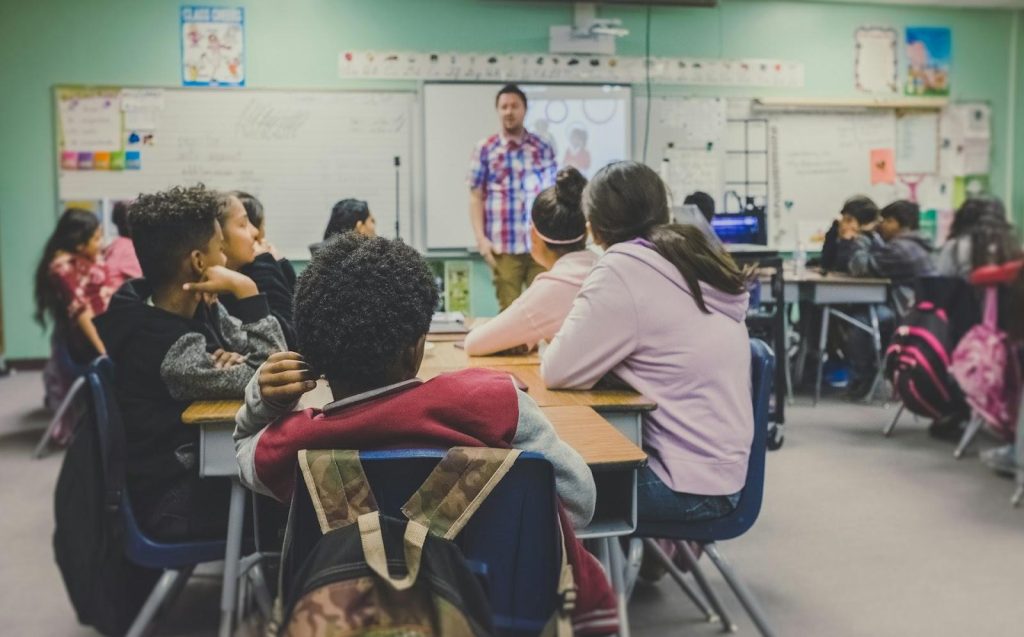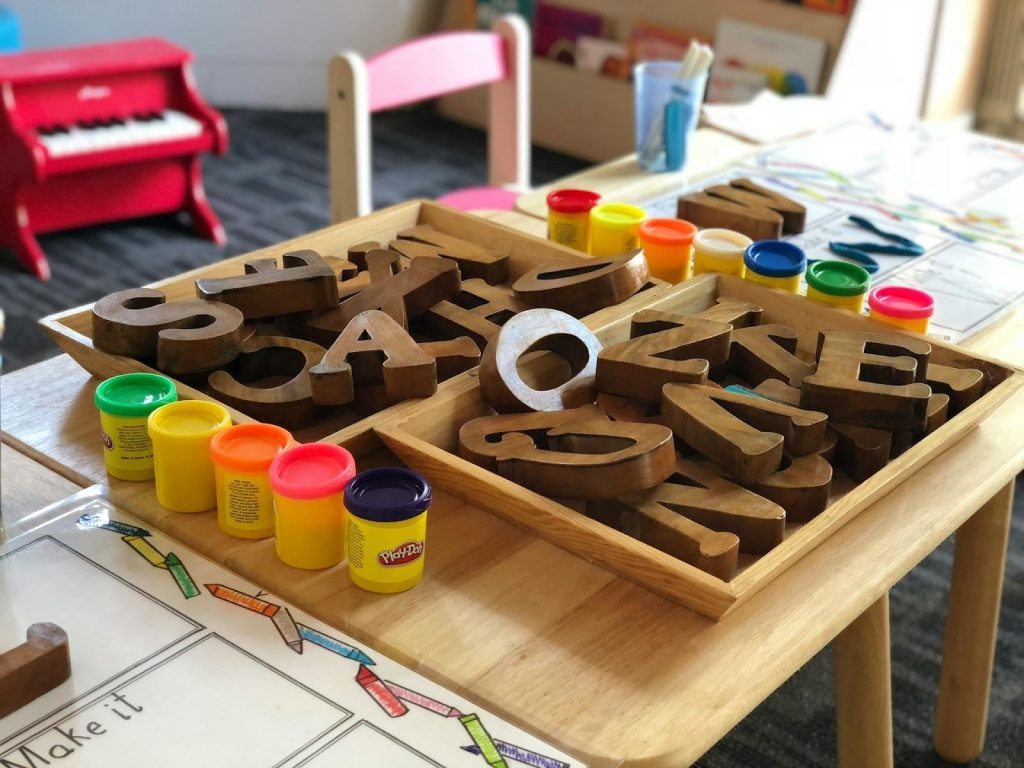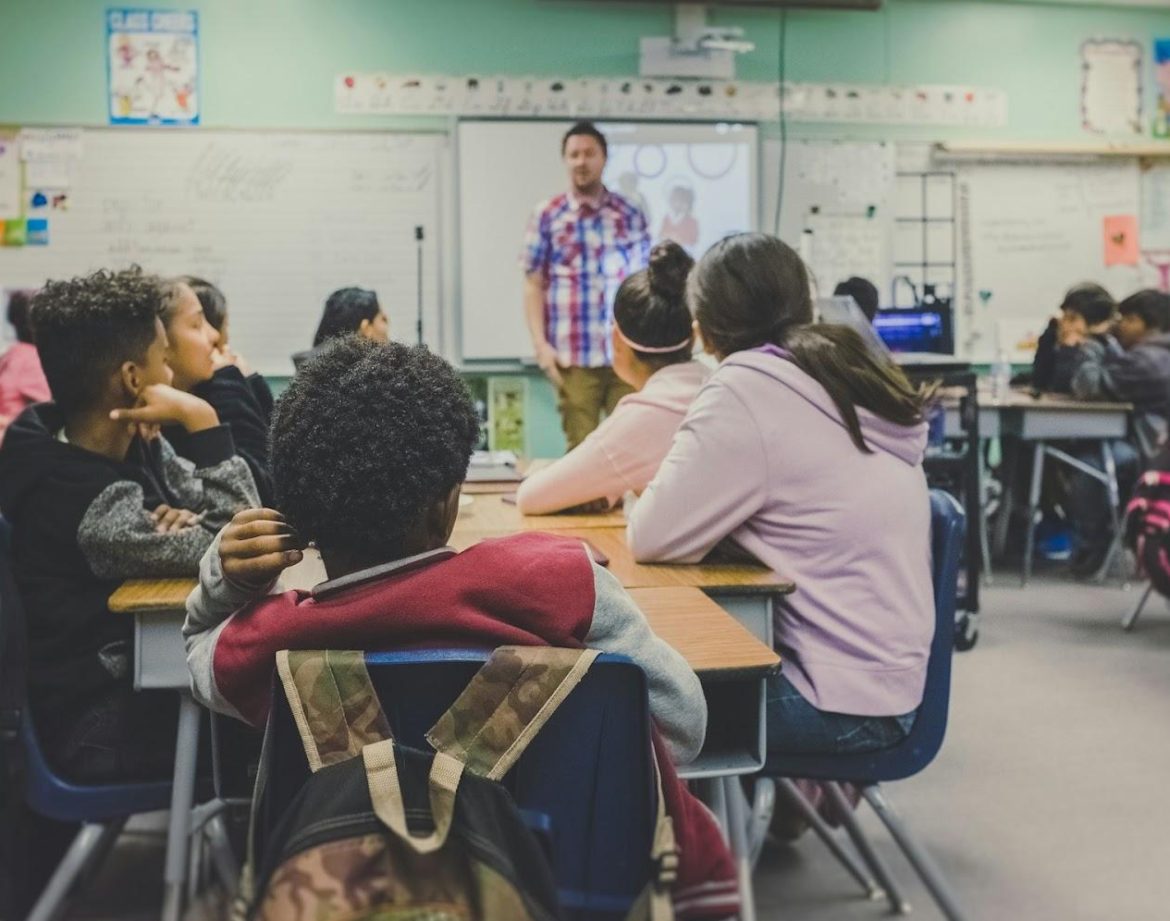Education System in Switzerland: Why Is It Considered a Model of Excellence and Innovation?
Switzerland’s education system stands out as one of the most advanced and diverse in the world. The country’s approach to learning reflects its commitment to excellence and adaptability.
Education in Switzerland is decentralized, with the cantons holding primary responsibility for schooling. This results in a varied and flexible system that caters to local needs.

Swiss education is divided into three main stages: primary, secondary, and tertiary. This structure provides students with numerous pathways to achieve their academic and career goals.
From compulsory education to vocational schools and university studies, Switzerland offers a comprehensive framework that prepares individuals for success in various fields.
The Swiss education system’s effectiveness is evident in its outcomes. Swiss universities consistently rank highly in international comparisons, and the country’s workforce is known for its skilled professionals. This blend of practical and theoretical learning has contributed significantly to Switzerland’s reputation for innovation and economic stability.
Read on to learn about the benefits and details of the education system in Switzerland.
The Three Levels of The Education System In Switzerland
Switzerland invests 5.7% of its GDP in education, which reflects its commitment to maintaining a strong education system. This system is divided into three levels:
- Primary
- Secondary
- Tertiary
Compulsory education
Switzerland places great importance on education, requiring all children to attend school from an early age. This system ensures that every child receives a solid foundation of knowledge and skills.
Compulsory education in Switzerland typically lasts for 9 to 11 years, depending on the canton. Children usually start school at the age of 4 or 5 and continue until they are 15 or 16 years old.
Swiss schools offer a mix of subjects, including languages, mathematics, sciences, and arts. Many cantons also include a second national language in their curriculum.
Compulsory schooling aims to provide students with a well-rounded education. It equips them with essential skills and knowledge for their future academic or professional pursuits.
To prevent any confusion, we should mention that the structure of compulsory schooling is divided into two main levels: primary and lower secondary schools.
- Primary education forms the base, lasting about 6 years in most cantons.
- Lower secondary education follows, generally spanning 3 years. During this time, students build on their primary school knowledge and prepare for further education or a vocational school.
Primary education
Primary education in Switzerland forms the foundation of a child’s academic journey. It focuses on developing essential skills and knowledge while fostering social and emotional growth.
Kindergarten and the first learning cycle
Primary school in Switzerland typically begins at age 6 or 7 and continues until the child is 12 or 13 years old. The first stage, known as the first learning cycle, includes kindergarten and the initial years of primary education.
Kindergarten is an integral part of the Swiss education system. It emphasizes play-based learning and socialization, preparing children for formal schooling. Children usually attend kindergarten for one or two years before moving on to primary school.
The primary level curriculum covers core subjects such as:
- Mathematics
- Language (local language of the canton)
- Science
- Art and music
- Physical education
Classes are typically small, allowing for personalized attention, and teachers employ various teaching methods to cater to different learning styles.
Swiss primary schools prioritize inclusivity and integration, providing support for children with special needs and those from diverse backgrounds.
Secondary education
Secondary education in Switzerland is divided into two stages, providing students with diverse pathways for academic and vocational development. This system aims to prepare young people for higher education or entry into the workforce.
A unique aspect of Swiss education is its dual-track vocational education and training system. This approach combines classroom learning with practical work experience, preparing students for successful careers.
Lower secondary (Gymnasiums or Kantonsschule)
Lower secondary education in Switzerland typically begins around age 11 or 12 and lasts for 3-4 years. This stage is compulsory and focuses on providing students with a solid foundation in various subjects.
Students attend either a gymnasium (also known as Kantonsschule) or a regular secondary school. Gymnasiums offer a more academically rigorous curriculum, preparing students for university studies.
Key subjects taught during this stage include:
- Mathematics
- Sciences
- Languages (including local language and foreign languages)
- History and geography
- Arts and physical education
Assessments and exams help determine students’ aptitudes and guide them towards suitable upper-secondary options.
Upper secondary education
Upper secondary education in Switzerland offers students multiple pathways, catering to different academic and vocational interests. This stage usually lasts 3-4 years and is optional, though most students choose to continue their education.
The main options for upper secondary education include:
- Baccalaureate schools (Gymnasiums): These prepare students for university studies and lead to a federal matura certificate.
- Vocational education and training: Combines practical work experience with classroom learning, resulting in a Federal VET Diploma or Certificate.
- Specialized schools: Offer focused education in fields like healthcare, social work, or arts.
Students can also pursue a Federal Vocational Baccalaureate alongside their VET program, allowing access to universities of applied sciences.
This diverse system ensures that Swiss students have flexible options to align their education with their career goals and interests.
Tertiary education
Finally, Switzerland’s tertiary education system offers diverse opportunities for higher learning. It combines traditional university education with more practical, career-oriented programs at universities of applied sciences.
University education
Switzerland boasts several world-renowned universities that attract students from across the globe. These institutions focus on academic research and theoretical knowledge.
Swiss universities offer bachelor’s, master’s, and doctoral degrees in various fields. The system emphasizes academic freedom and research excellence.
Students typically complete a bachelor’s degree in three years, followed by a one to two-year master’s program, while doctoral studies can take three to five years.
It’s important to mention that Swiss universities welcome international students, creating a diverse learning environment. Many programs are taught in English to accommodate non-Swiss students.
Fachhochschule (Universities of applied sciences)
These universities provide a more practical approach to higher education. They focus on preparing students for specific professions.
Programs at Fachhochschulen typically combine theoretical knowledge with hands-on experience. Students often complete internships or work placements as part of their studies.
Fachhochschulen offer bachelor’s and master’s degrees in fields such as engineering, business, and healthcare. They collaborate closely with industry partners to ensure their curricula meet current job market needs.
Graduates from these institutions are highly sought after by employers because of their practical skills and industry experience.
Live in Verbier and access a top-tier education system near the Alps.
Administration and Regulation

Switzerland’s education system is characterized by its decentralized structure and shared responsibilities between federal and cantonal levels. The cantons play a crucial role in shaping educational policies and practices.
Decentralized system
The Swiss education system is organized in a decentralized manner, with primary responsibility for education resting with the 26 cantons. Each canton has the authority to set its own school calendar, curriculum, and educational standards.
The federal government provides a framework, but the cantons have significant autonomy in implementing educational policies.
Teacher education and training universities are also managed at the cantonal level. This ensures that teacher preparation programs align with the specific needs and requirements of each region.
While decentralization offers benefits, it can lead to variations in educational practices across cantons. To address this, inter-cantonal agreements promote harmonization and cooperation in certain areas of education.
The Swiss Conference of Cantonal Ministers of Education plays a key role in coordinating efforts and fostering collaboration among cantons. This helps maintain a balance between local autonomy and national consistency in education.
Advantages Of The Education System In Switzerland
Switzerland’s education system prioritizes individual growth, practical skills, and equal access to quality learning opportunities.
Flexibility and individualized learning
The Swiss education system is highly flexible and adaptable to students’ needs. It allows for easy transitions between academic and vocational paths.
Students can choose from various educational routes based on their interests and abilities. This flexibility ensures that learners can find the best path for their personal and professional development.
The system also emphasizes individualized learning approaches, with teachers tailoring instruction to each student’s pace and learning style and fostering a supportive environment for academic growth.
Equal opportunities
Switzerland’s education system strives to provide equal opportunities for all students. Public schools are free and accessible to everyone, regardless of socioeconomic background.
Moreover, the system offers support services for students with special needs or learning difficulties. This inclusive approach helps ensure that all children receive a quality education.
Switzerland also promotes multilingualism, with instruction available in multiple national languages, which prepares students for a globalized world and enhances their career prospects.
Practical training
Vocational education and training is a cornerstone of the Swiss education system. It combines classroom learning with hands-on work experience.
Students in basic vocational education spend part of their time in the classroom and part in apprenticeships. This dual approach helps them gain practical knowledge and skills directly applicable to their chosen careers.
The VET system prepares students for a wide range of professions, covering fields such as healthcare, technology, finance, and hospitality.
What really sets this system apart is that employers actively participate in developing curricula, ensuring that vocational training aligns with industry needs.
Critical thinking and independent learning
Swiss education places a strong emphasis on developing critical thinking skills. Students are encouraged to question, analyze, and form their own opinions.
In addition, teachers use interactive methods to engage students in discussions and problem-solving activities, which fosters independent thinking and creativity.
In Swiss schools, project-based learning is common because it allows students to apply their knowledge to real-world situations, enhancing their problem-solving abilities.
The system also promotes self-directed learning. This means that students learn to take responsibility for their education, developing valuable skills for lifelong learning and professional growth.
Own a home in Verbier and enjoy both nature and educational flexibility.
How Does It Compare to Other National Education Systems?

Switzerland’s education system stands out globally for its unique attributes and approach.
Multilingualism
Switzerland’s commitment to multilingual education sets it apart from many other nations. Students typically learn at least two national languages plus English during their compulsory education.
- In French-speaking cantons, pupils start learning German early on.
- Similarly, Italian-speaking regions introduce French or German as a second language.
This focus on language learning enhances students’ communication skills and cultural understanding.
Smaller school sizes
Swiss schools often have smaller class sizes compared to many other countries. This allows for more personalized attention and support for students. Also, teachers can better address individual learning needs and create a more engaging classroom environment.
This approach contrasts with some nations where large class sizes are common, especially in urban areas.
Balance of academic and vocational training
Switzerland’s education system is renowned for its dual-track approach, balancing academic and vocational education.
Post-compulsory education offers students choices between general education and vocational training. In addition, apprenticeships are highly valued and integrated into the system.
This approach ensures a skilled workforce across various sectors, providing multiple pathways to success and recognizing different talents and career aspirations. The system’s flexibility allows students to switch between academic and vocational tracks.
Private and International Schools
Switzerland offers diverse educational options beyond the public system, with private and international schools providing alternatives tailored to specific needs and preferences.
Public vs. private schools
Private schools in Switzerland operate independently from the government. They often feature even smaller class sizes and specialized curricula. Many private schools cater to specific educational philosophies or religious affiliations.
Catholic schools are common among religious private institutions. They integrate Catholic teachings into their programs while following Swiss educational standards.
Private schools typically charge tuition fees, which can be substantial, but they may offer scholarships or financial aid to eligible students.
Of course, some private schools in Switzerland follow alternative educational models like Montessori or Waldorf, emphasizing student-centered learning and holistic development.
International schools
International schools in Switzerland primarily serve expat families and those seeking an international education. They often teach in English or offer bilingual programs.
Most international schools follow curricula like the International Baccalaureate (IB) or American or British school systems, allowing students to transition smoothly between countries.
French schools are also popular among international options, especially in French-speaking regions of Switzerland.
An international school typically provides a multicultural environment, encouraging students to interact with peers from various countries. These schools often offer extracurricular activities that celebrate diversity and promote international-mindedness. Language support programs help non-native speakers adapt to the curriculum.
One typical example is Verbier International School, which tailors its curriculum to the needs of modern-day children.
Live close to top schools in Verbier with world-class educational access.
Early Childhood Education

Switzerland’s early childhood education system focuses on nurturing young children’s development through play-based learning and socialization.
Daycare and kindergarten
Daycare centers in Switzerland provide care for children from infancy to school age. These facilities support children in their early development through structured activities and social interaction.
Many centers operate year-round, aligning with working parents’ schedules.
Kindergarten typically starts at age 4 or 5, depending on the canton. Most Swiss children attend kindergarten for two years before entering primary school.
The kindergarten curriculum emphasizes:
- Social skills development
- Language acquisition
- Basic numeracy
- Physical education
- Creativity through arts and crafts
Nursery (Pre-school)
Nurseries, or pre-schools, cater to children aged 3-4 and bridge the gap between daycare and kindergarten.
The nursery environment fosters:
- Early learning through play
- Language development, especially in multilingual cantons
- Fine and gross motor skills
- Basic problem-solving abilities
The school year in nurseries typically aligns with the local education system’s calendar. Some nurseries offer civic education tailored for young children, introducing them to Swiss culture and values.
Pre-schools often collaborate with parents to ensure a smooth transition to kindergarten. They provide regular updates on children’s progress and offer guidance for at-home learning activities.
Swiss Education System Stands Out for Its Quality and Effectiveness
In Switzerland, students benefit from a well-structured approach that emphasizes practical skills alongside academic knowledge. Swiss schools prioritize multilingualism and children often learn multiple national languages plus English from an early age.
Moreover, innovation and research receive strong support in Swiss higher education. The country’s universities consistently rank among the world’s best, attracting top education talent from around the globe.
Through its comprehensive and adaptable approach, Switzerland’s education structure continues to produce well-rounded, skilled individuals. For anyone looking to move to Switzerland with a family, it’s safe to say that their children will get an excellent education which will prepare them for the challenges of the modern world.
If you’re considering settling in this beautiful country, Verbier offers an unparalleled alpine lifestyle. Whether you’re looking to buy a luxurious chalet or apartment or rent a property, make sure to explore our options available in Verbier.
Your family will get to enjoy world-class education, amazing nature in the Alps, and unforgettable skiing in the winter months. Let’s get in touch and find your dream home in the Swiss Alps!




